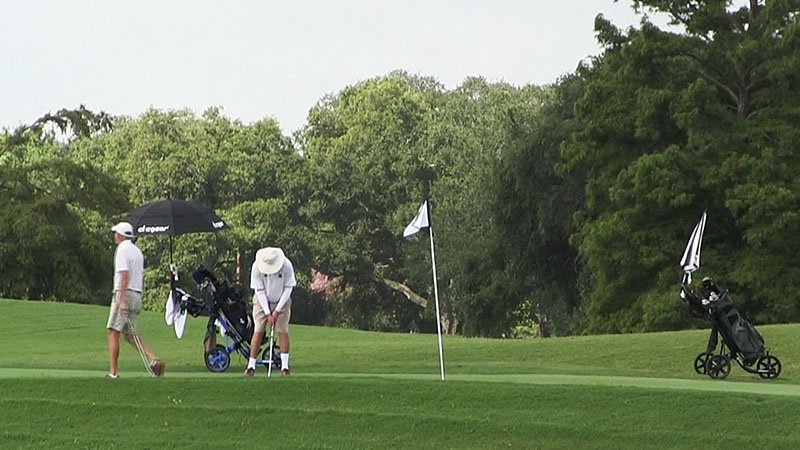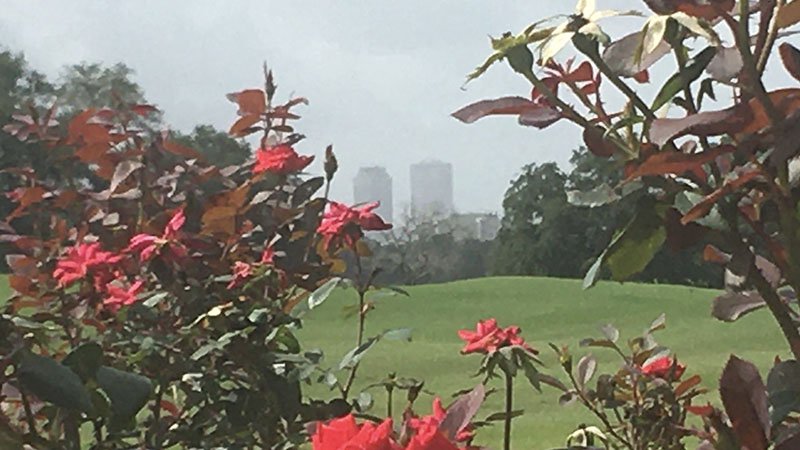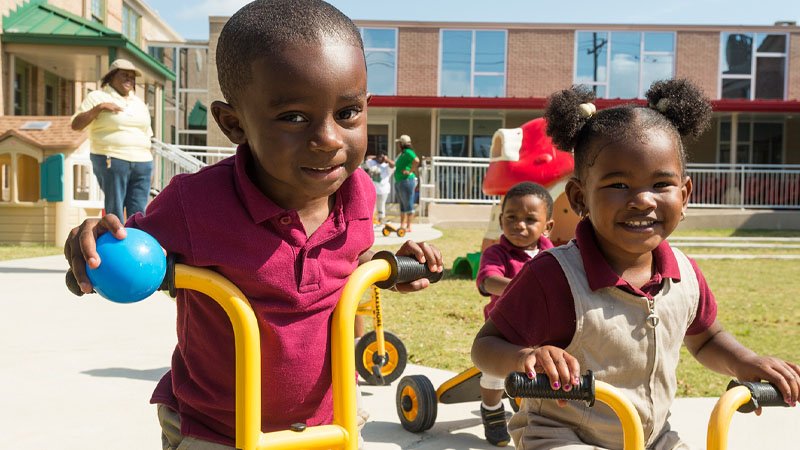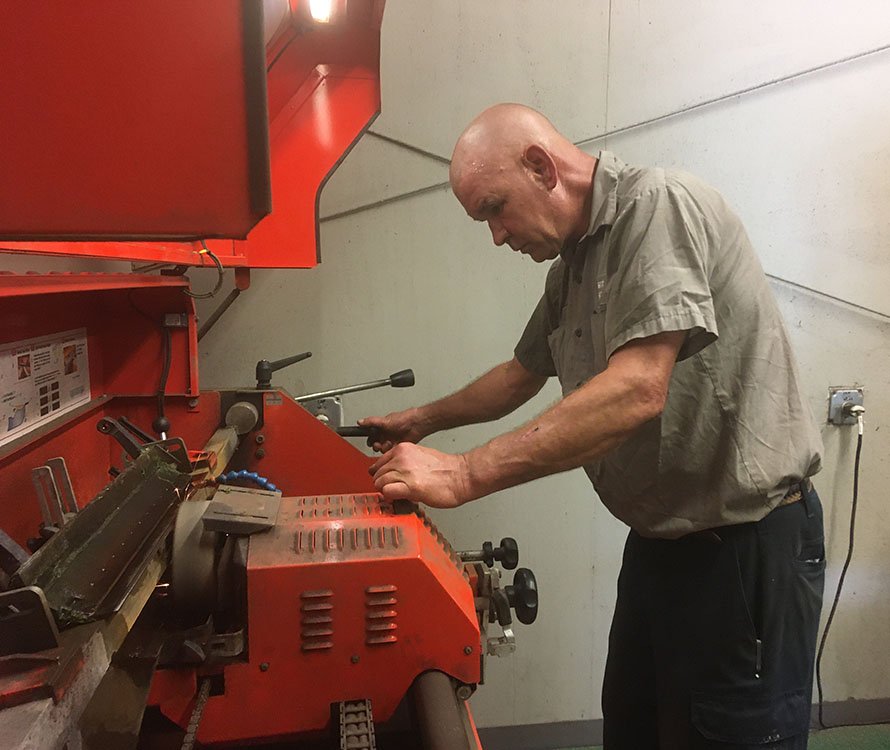
Sense of community runs deep in New Orleans. That might be obvious to those who live here, but probably not so much to those who don't. Any doubts likely were swept away 15 years ago when Hurricane Katrina erased more than 1,800 lives across the Gulf Coast, but failed to destroy hope.
Although it happened so long ago, Katrina still is a defining moment here, and its effects are still evident all over town. Ask anyone who either rode out the storm or returned shortly afterward how high the water was in their home, and they can still tell you. They can still describe the scenes and the stench.
 A local public golf course that opened a dozen years after Katrina is playing a critical role in rebuilding a New Orleans neighborhood that was among the hardest hit in the city.
A local public golf course that opened a dozen years after Katrina is playing a critical role in rebuilding a New Orleans neighborhood that was among the hardest hit in the city.
The recently opened South Course at Bayou Oaks at City Park is a city-owned course designed by Rees Jones that is affiliated with the PGA Tour's TPC network and managed by a non-profit agency. The Bayou District Foundation that operates the course uses revenue from the property to fund a host of redevelopment projects in an at-risk neighborhood that local leaders say has transformed from one of New Oreleans' most-crime ridden communities to one of its safest.
It is a responsibility that the turf operations staff at Bayou Oaks takes seriously. Look them in the eye, and you can see it in their faces; talk with them, and you can hear it in their voices.
Bayou Oaks superintendent Ryan McCavitt has been in New Orleans for four years. An Illinois native, he missed Katrina, but he's hardly an outsider. He has deep roots in central Louisiana. Earlier in his career he was superintendent at Oakwing Golf Club in Alexandria, and his wife is from Marksville. He knows what Katrina's legacy means around here.
"After Katrina, everything here was pretty much ruined," McCavitt said.
"The Bayou District Foundation is spearheading rebuilding the hardest-hit neighborhoods in New Orleans, specifically the Gentilly area.
"I love telling the story of what is happening here."

In the days, weeks and months after the storm, New Orleanians largely were left to fend for themselves to begin picking up the pieces of their lives and putting to rest loved ones who had lost theirs.
Although Tiger, Elvis, Cher and LeBron need not a last name to be recognized, the most widely known single-name entity in this town is still a blowhard named Katrina.
A municipal golf course that was hit equally hard by Katrina and needed a hand to recover is an unlikely hero in this story.
City Park has been a staple of the New Orleans golf community since 1902, but was all but destroyed 15 years ago by the hurricane. The golf complex was rebuilt with FEMA dollars as well as state and local funding thanks to the work of city leaders who had a vision that revenue generated by the golf operation could help lift up the surrounding community in New Orleans' Gentilly neighborhood through the non-profit Bayou District Foundation. That vision includes new schools, affordable housing and healthcare facilities for those in need.
Course conditions are paramount to ensure golfers and money keep coming through the door to help fund the foundation's outreach initiatives
"For myself, being part of the Bayou District Foundation was a big selling point for me coming down to New Orleans," McCavitt said. "I've built four golf courses now throughout my career. The opportunity to move back to Louisiana and be part of something like the Bayou District Foundation and rebuilding after Katrina just checked all the boxes for me."
Katrina might be a tiresome topic elsewhere, but it remains a big deal in New Orleans.
In the early morning hours of April 29, 2005, Katrina made landfall in Buras, Louisiana, south of New Orleans near the Mississippi River Delta before laying waste to the Crescent City over the next several hours. Levees protecting the city - much of which is below sea level - from the Mississippi that flows through downtown, were breached in dozens of locations.
For myself, being part of the Bayou District Foundation was a big selling point for me coming down to New Orleans. I've built four golf courses now throughout my career. The opportunity to move back to Louisiana and be part of something like the Bayou District Foundation and rebuilding after Katrina just checked all the boxes for me.
Katrina left New Orleans looking like a war zone. Homes and businesses were destroyed. The lucky left well in advance or at least survived the aftermath. Many others were not so fortunate. The images in the wake of the storm were horrifying: bodies floating in the water, or abandoned on the sidewalk. By the time floodwaters receded weeks later, the storm was blamed for more than 1,836 deaths in Louisiana and Mississippi. The bodies of many others never were recovered.
A longtime member of McCavitt's crew who evacuated to Atlanta, said his home had 8 feet of water in it when he returned. For two years he paid rent on a home he lived in and a mortgage on a flooded home under repair.
Gentilly was an easy target when Katrina overwhelmed the levies that protect the area from the surrounding canals leading to Lake Pontchartrain. Equally hemmed in by Bayou St. John to the East, the Orleans Canal to the West and the lake to the North, City Park and its golf operation was hit just as hard.
Once home to four golf courses, City Park now has two. The original North Course, built in 1902, was home to the city's PGA Tour event, now known as the Zurich Classic of New Orleans, from 1936 through 1962 when the tournament moved to Lakewood Country Club and later English Turn Golf and Country and finally to its current home at the TPC of Louisiana in nearby Avondale. The North layout was restored and renovated several years ago, the new 7,300-yard Jones-designed South Course was built on the site of the former East and West layouts, and the fate of the old south course location today remains uncertain.
A year after the hurricane, a group of the city's public and business leaders decided something had to be done to save their city. Together, they formed the Bayou District Foundation to help revitalize the city's Gentilly neighborhood.
East of the city's more famous French Quarter, Central Business District and Uptown neighborhoods, historic Gentilly was hit especially hard by Katrina. Bayous and canals run through the area to massive Lake Pontchartrain, making Gentilly and City Park easy targets.
Bringing the area back has been a slow and steady process that continues today.
At the center of that project is Bayou Oaks, the multi-agency project that helped fund construction of 685 housing units at the Columbia Parc apartment complex, a collection of 685 housing units, the Educare New Orleans early learning center, the KIPP Believe K-8 charter school and the St. Thomas Community Health Center. And there are plans for a 25,000-square-foot grocery store and pharmacy. Profits from the golf operation help support those initiatives.
 "The Bayou District Foundation has done a lot for the community; they've built apartments that are affordable and two schools," said Evan Meldahl, the newly minted winner of the 2020 TurfNet Technician of the Year Award, presented by John Deere (pictured here). "The money is going toward good things in the community."
"The Bayou District Foundation has done a lot for the community; they've built apartments that are affordable and two schools," said Evan Meldahl, the newly minted winner of the 2020 TurfNet Technician of the Year Award, presented by John Deere (pictured here). "The money is going toward good things in the community."
The blueprint for this plan to rebuild the Gentilly area is East Lake Golf Club in Atlanta, where philanthropist Tom Cousins who founded the East Lake Foundation that is the cornerstone of redevelopment efforts in the surrounding neighborhood. Cousins, former owner of the NBA's Atlanta Hawks, even helped civic leaders in New Orleans establish the Bayou Oaks District Foundation.
As many as 150,000 rounds a year once were played at City Park. After Katrina, City Park golfers scattered. Many left town and those who came back found other places to play. Since completion of the new South course, players have been coming back in droves.
Even throughout the coronavirus period, Bayou Oaks has been jammed, with up to 9,000 rounds a month played there despite New Oreleans' infamously hot and humid climate.
Although New Orleans is not among the country's great golf destinations, it has something big in its favor as it continues its long, slow road recovery from a life-altering event that occurred nearly two decades ago - the people who lived through it and who want to see their community and their golf course succeed.
You can see it in their eyes, and you can hear it in their voices.
TurfNet editor John Reitman is a former resident of Louisiana

